Venice's 1,000-year-old tradition of glass-making sees an artistic revival
It is not easy to become a glass "maestro" on the Italian island of Murano
VENICE -- Nicola Causin was 17 years old when he started working with glass.
"It was like falling in love," he said.
That love hasn't faded after 34 years of honing his craft on Murano, a short boat ride from Venice – and the epicenter of the Venetian glass-making industry.
"It's always a challenge; you have to be very humble in front of this material. It's the glass that commands you" and not the other way around, he told ABC while cleaning up after a day's work in the furnace where he'd spent his day making intricate glass artworks.
Observing him blow, fold and cut red-hot glass extracted from the heart of the flames is nothing short of mesmerizing. Glass maestros -- or "glass masters" -- like Causin trained in the artisan craft still use nearly the same tools and techniques they did 1,000 years ago when the lagoon city became a glass-making hub.
These time-tested techniques are also increasingly being applied to contemporary art and design in an effort to keep the trade alive and move beyond the simple souvenir pieces found in Venice storefronts.
In September, Nomad, a traveling showcase for collectible art and design in a 15th-century Venetian palazzo the first weekend of September, and Venice Glass Week brought design-enthusiasts to Venice for a glimpse at the latest and greatest in contemporary glass arranged in in historic locations around the city.
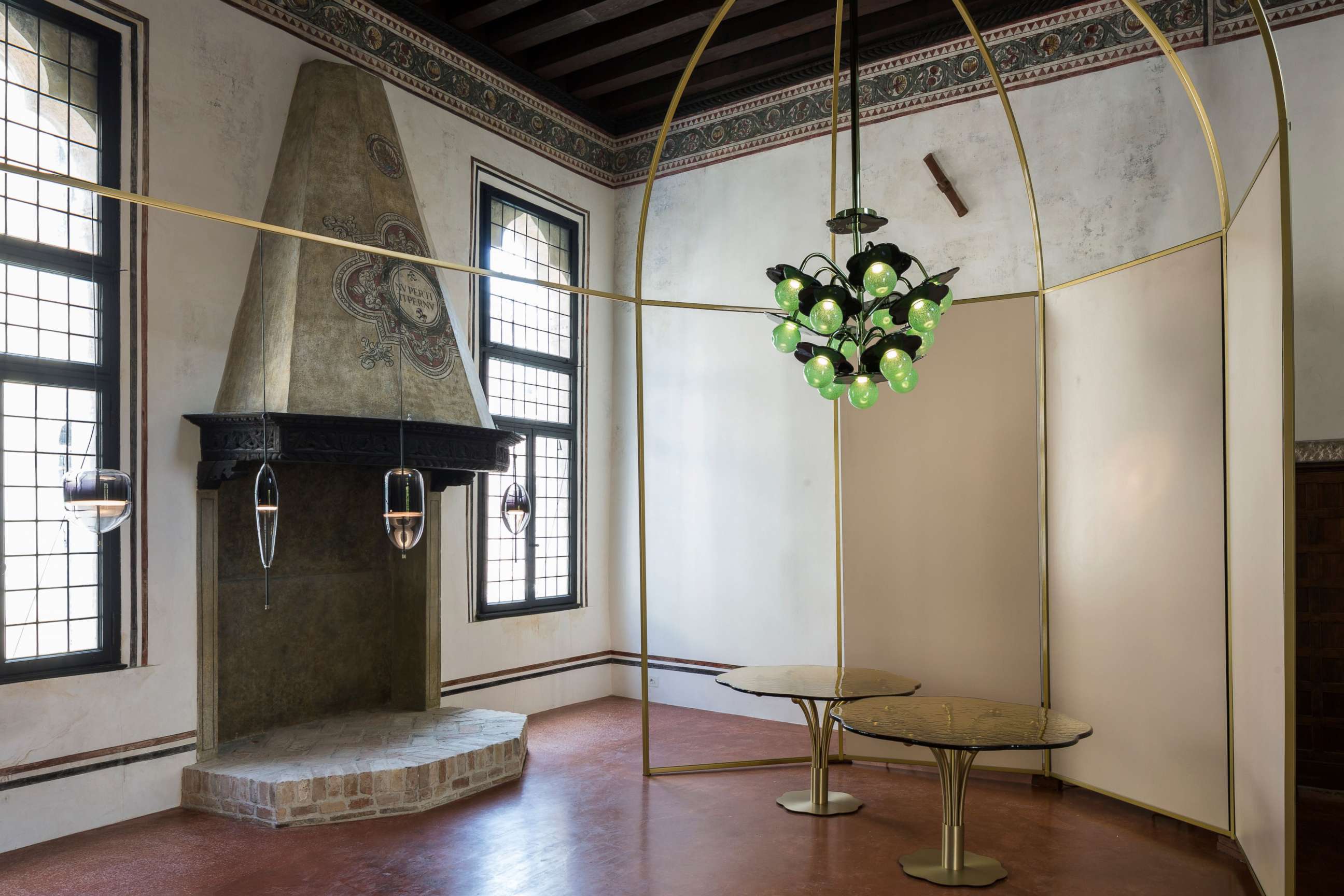
Venetian glass-making began during the Roman Empire and became the region's major industry. By the late 1200s, a glass-makers' guild was established to safeguard the secrets of the craft, and in 1291, furnaces were moved to the nearby islands of Murano as to avoid starting fires in overcrowded Venice.
The techniques were unparalleled, and Murano products -- especially elegant chandeliers and glassware -- were in high demand all over Europe.
Although the Venetian glass-making industry has shrunk since it peaked in the 16th century, today glass maestros still hone their craft in family-run furnaces on Murano.
To become a master is no easy feat -- those who choose a life of fire typically begin an apprenticeship in their teens and train for at least 15 years until they are allowed to work as a humble laborer in a furnace. To become a master glass-blower, they must demonstrate special talent -- and not everyone has what it takes.
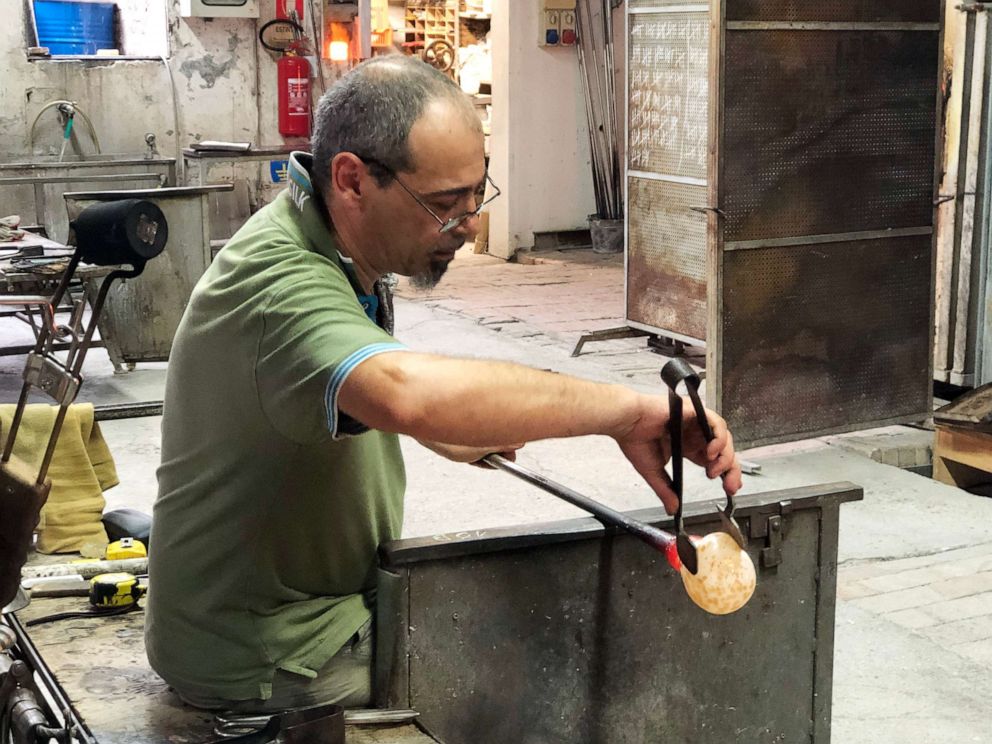
"You will never find a maestro easily. Nobody can teach you how to be an artist" Fanny Campagno, manager at Berengo furnace, told ABC.
Yet despite the pool of talent, the artisanal craft may need a revival.
"Fifteen to 20 years ago there were around 700 furnaces and now [there] are 110," points out Maurizio Mussati, founder of design company WonderGlass.
His company merges the traditional craftsmanship of Murano glass-making with contemporary lighting and furniture designs and presented pieces by designer India Mahdavi at Nomad.
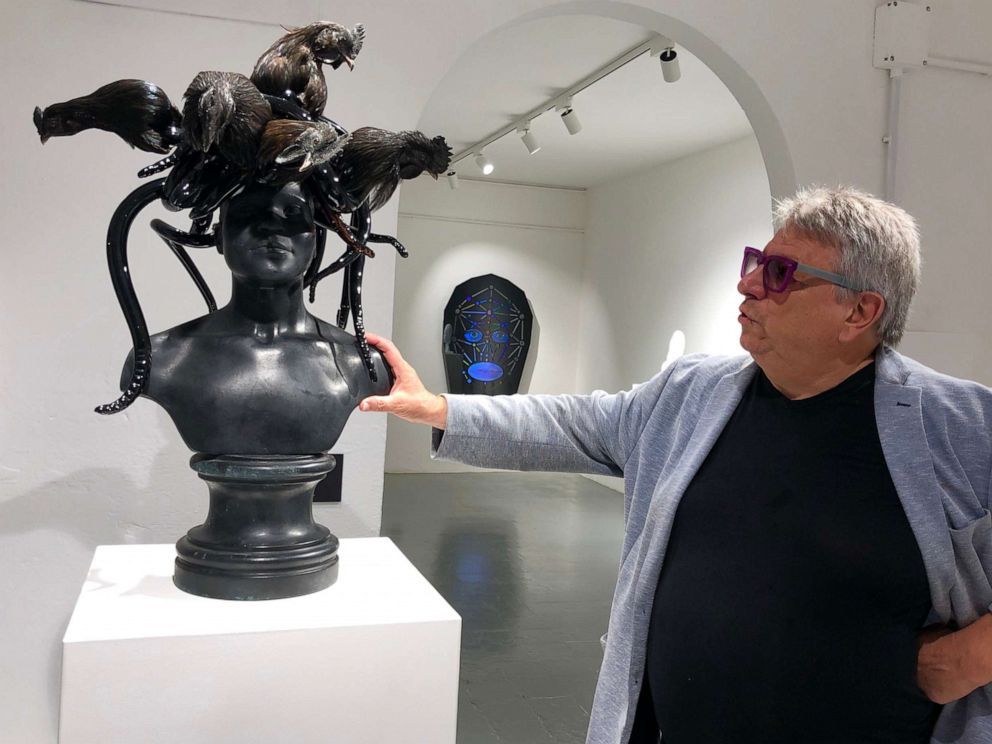
"I think Murano definitely adds value to every design because if you have a chandelier and specify it is Murano glass, it brings a seal of quality to the project" said Nicolas Bellavance-Lecompte, Nomad's co-founder.
Many of the works on display, from table lamps to mirrors, were made in the glass-making epicenter. Nomad took place alongside the third annual Venice Glass Week, which put on over 180 events around the city to put the long tradition of Murano glass-making back in the spotlight.
Designer India Mahdavi's debuted her whimsical chandelier "Clover," which put a decidedly modern twist on traditional 17th-century Murano chandeliers associated with opulence.
For Mahdavi, working with artisans to help keep their craft alive is key -- and not only around Venice, but around the world. Japanese basket weavers must also train for decades until they are at the top of their field, she points out.
"I think that it's important to put these artisanal 'know-hows' back into the whole context about what we might be losing" she told ABC. "We know how long it takes to become a maestro."
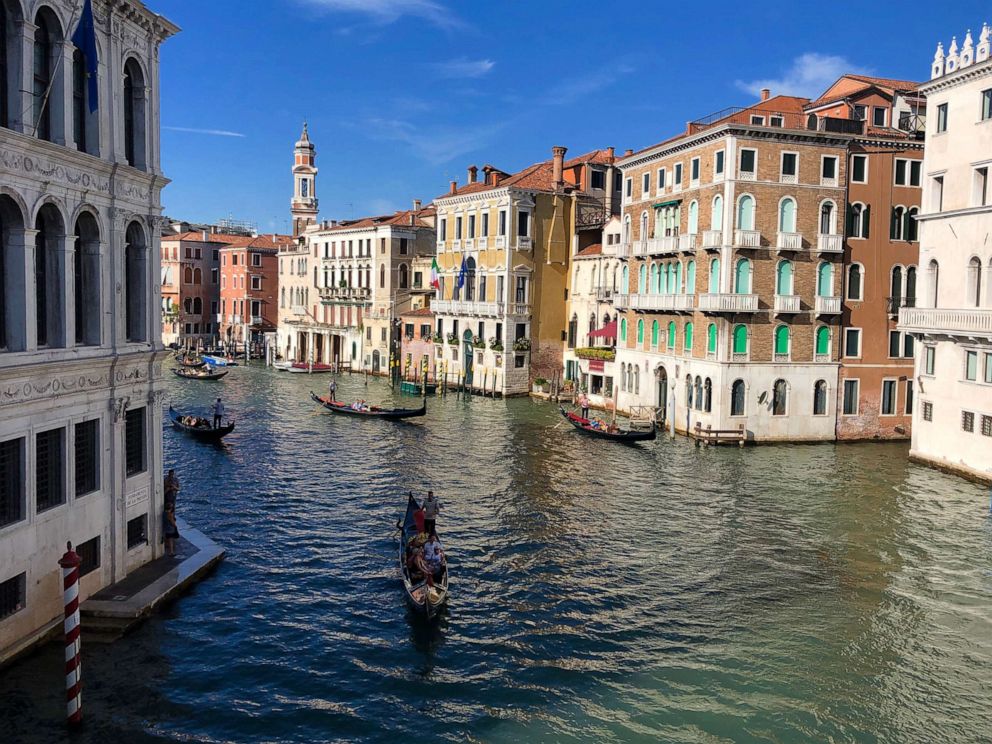
The furnace of Berengo Studio is also shaking up the industry. In the 30 years since it opened on Murano, its founder Adriano Berengo has made it his mission to convince some of the world's best-known artists to start working with glass.
He's already collaborated with superstars such as Ai Wei Wei and shows his work in "Glassstress," an exhibition in an abandoned glass furnace put on with the Venice Biennale art festival.
"I'm not coming from the past -- I don't make chandeliers or drinking glasses" explains Berengo of his mission to bring glass to the contemporary art world. "It's medium we have everywhere in Venice, but the ability to use it for contemporary art is something which is relatively recent."
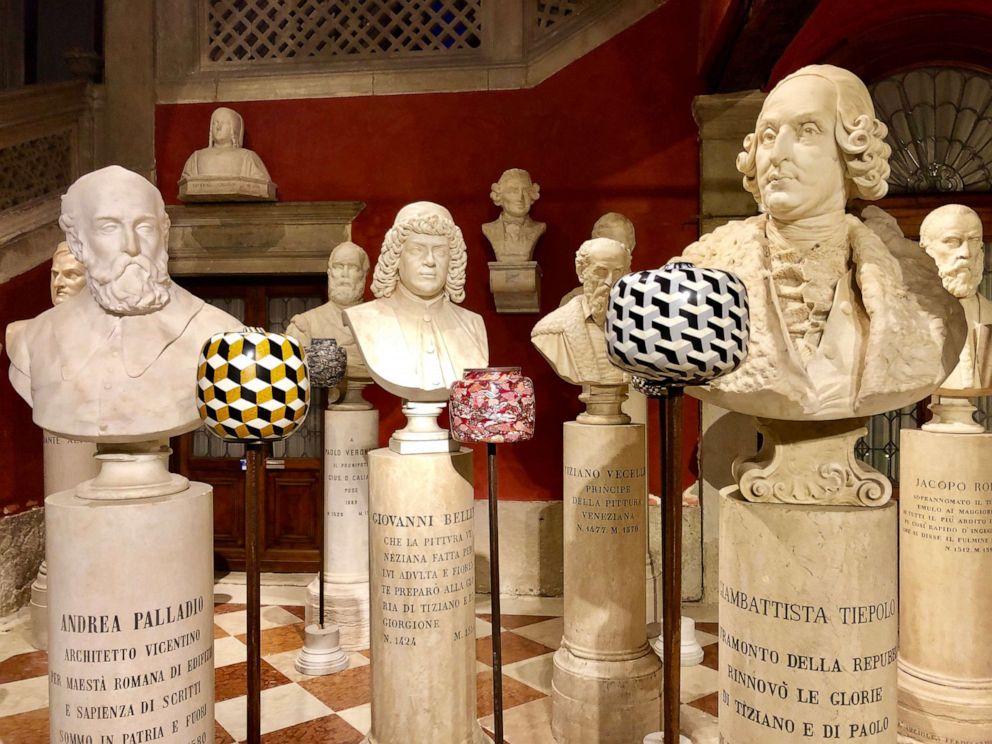
For many of Berengo's artist collaborators, it's the first time they've worked in glass, which presents a unique set of challenges.
"The artist has to give up his narcissism since he is using the hand of another person," Berengo said. "The glass maestro essentially represents the extension of the hand of the artist, and when these two are together, you can achieve great results."




